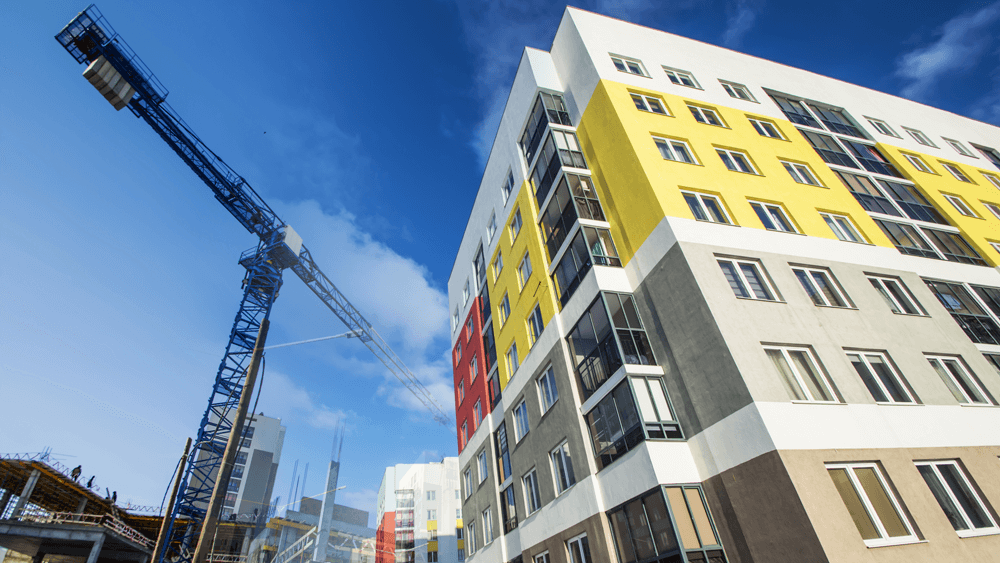How do people find affordable homes in the increasingly expensive San Francisco Bay Area? For most, it’s mission impossible. The city of San Francisco is the second most costly city in which to live, according to Kiplinger. It also has some of the lowest vacancy rates in the nation. In 2016, the San Francisco Mayor’s Office and Google teamed up alleviate the nerve-wracking challenges for people who qualify for affordable housing by turning to cloud computing.
After decades of using a paper lottery process to connect people in need with affordable housing, the city went digital with DAHLIA: San Francisco Housing Portal, a cloud computing-powered online service simplifying a complex search and application process. It gives developers and property managers tools to manage the hundreds or thousands of applications that may arrive for the few available units.
The digital service quickly became a textbook example of how technology can make government work better for citizens — and for something so critical as shelter, according to the San Francisco Examiner.

The Bay Area consists of nine counties with a range of populations, from Napa County's 140,000 to Santa Clara County’s over 1.8 million. Much of the area has eye-popping rental values, according to the San Francisco Chronicle: the metro areas of San Francisco, San Jose and Oakland have average respective rents of $3,335, $2,789 and $2,302.
Finding affordable housing was like a scavenger hunt, according to Barry Roeder, a Mayor’s Office of Housing employee working on the portal project.
“You had to know somebody who knew somebody, or you saw a flyer, or you saw a newspaper ad,” Roeder said. “Then you go to the developer, in person, and they'd hand you a 15-page paper application that required applicants to provide supplemental documentation.”
There really wasn’t a central resource to find affordable housing, he said. And for the people working as property managers or for the companies developing new units, the situation was even worse. Roeder said people can now apply from their smartphones and track their lottery number in real time.
When DAHLIA first came online, it was simply a listing of available affordable units. It now also collects information from prospective renters via a simplified application and shows housing developers how many applicants are applying for the units in a particular building. In addition, the system lists and takes applications for units available for purchase.
Open Source Housing
Other Bay Area counties saw how a new portal could alleviate the cumbersome process their residents had to endure in critical times of need. San Mateo was ready to get rid of its old, clumsy process.
“We have affordable housing professionals who do this day in and day out, and a lot of them are doing this by hand,” said Ulysses Vinson, director of SMC Labs, the San Mateo County's information services department and innovation incubator. “A lot of the stuff they use is in databases that are 15 years old. Many just work off printed spreadsheets.”
He said this archaic process needed to get with the times and leverage technology so it was faster and easier on everyone involved.
San Francisco County made DAHLIA's code open-source so it can share the system with other Bay Area counties in the hopes that it can become regional. To ensure data privacy, DAHLIA doesn't collect the kind of sensitive information like Social Security or bank account numbers, according to Roeder. He said the data services department regularly stress tests the system, including backup protocols, to make sure certain data stays secure.
In 2018, San Mateo County began using DAHLIA as a jumping-off point to create a similar housing portal. Vinson said the first challenges came in deciding what housing to include in the portal. Rather than just list all available housing stock, they had to determine the criteria for the affordable designation.
[Related: San Mateo CIO Get Tech Tips at Local Coffee Shops and Racetracks]
San Mateo County has different challenges than San Francisco. The county has 22 municipalities, each with specific affordable housing laws and requirements for developers, as well as different rules for information that needs to be collected from applicants. Vinson and his team made sure that the portal’s application forms were suitable for all of the municipalities.
“Instead of hundreds or thousands of paper applications that they have to type in, building managers can watch the site and see applications float in,” Vinson said.
San Francisco and San Mateo Counties rely on third-party public cloud computing companies to store, organize and administer the incoming applications, as well as provide updates for users whose applications are entered into lotteries for available units. Vinson said these functions could be brought in-house or run on a hybrid cloud system sometime in the future.
As more couties like Alameda and Santa Clara come aboard, he said there will need to be more governance to ensure compatibility and security. Thinking long-term about cost, compatibility, interoperability and upgradeability of these systems is important to talk about early and often.
As availability of affordable housing fluctuates over time across different counties, having DAHLIA-like portals in more Bay Area counties will certainly make it easier for people to work through a more streamlined process.
Joel Keller is a contributing writer. He has written Fast Company, The New York Times and other publications. Follow him on Twitter @joelkeller.
© 2019 Nutanix, Inc. All rights reserved. For additional legal information, please go here.

